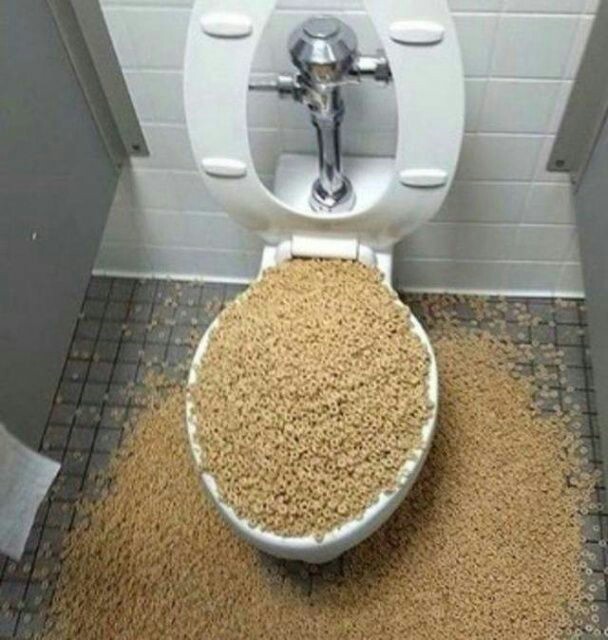Is it Recommended to Dispose of Food Down the Toilet?
Is it Recommended to Dispose of Food Down the Toilet?
Blog Article
Are you interested in tips about Flushing Food Down the Toilet??

Intro
Lots of people are typically faced with the problem of what to do with food waste, specifically when it involves leftovers or scraps. One usual concern that emerges is whether it's okay to flush food down the toilet. In this write-up, we'll explore the reasons individuals could consider purging food, the repercussions of doing so, and different techniques for appropriate disposal.
Reasons people might consider flushing food
Absence of awareness
Some individuals may not understand the potential harm brought on by flushing food down the bathroom. They may incorrectly believe that it's a safe technique.
Comfort
Purging food down the bathroom may look like a quick and easy solution to taking care of unwanted scraps, particularly when there's no neighboring trash bin readily available.
Negligence
In many cases, individuals might merely select to flush food out of large negligence, without thinking about the consequences of their activities.
Consequences of flushing food down the bathroom
Environmental effect
Food waste that winds up in waterways can contribute to contamination and injury water ecological communities. Furthermore, the water utilized to flush food can strain water resources.
Pipes concerns
Purging food can result in clogged pipelines and drains pipes, creating expensive plumbing fixings and inconveniences.
Kinds of food that ought to not be flushed
Coarse foods
Foods with fibrous textures such as celery or corn husks can get entangled in pipes and create obstructions.
Starchy foods
Starchy foods like pasta and rice can take in water and swell, causing obstructions in pipes.
Oils and fats
Greasy foods like bacon or food preparation oils should never ever be purged down the toilet as they can strengthen and create blockages.
Appropriate disposal methods for food waste
Using a waste disposal unit
For homes equipped with garbage disposals, food scraps can be ground up and flushed via the plumbing system. However, not all foods appropriate for disposal in this way.
Recycling
Particular food packaging materials can be recycled, reducing waste and decreasing environmental impact.
Composting
Composting is an environment-friendly method to take care of food waste. Organic products can be composted and used to enrich soil for horticulture.
The importance of correct waste monitoring
Reducing environmental injury
Appropriate waste management practices, such as composting and recycling, aid minimize air pollution and protect natural deposits for future generations.
Securing pipes systems
By staying clear of the practice of flushing food down the bathroom, homeowners can prevent costly plumbing repair work and keep the stability of their plumbing systems.
Final thought
To conclude, while it may be appealing to purge food down the toilet for ease, it is essential to understand the prospective effects of this action. By taking on appropriate waste management techniques and throwing away food waste responsibly, people can add to much healthier plumbing systems and a cleaner atmosphere for all.
FLUSH FOOD DOWN THE TOILET?
FLUSHING FOOD CAN CAUSE BLOCKED DRAINS IN YOUR HOME
All of the plumbing fixtures in your home are connected to the same sewer pipe outside of your home. This outdoor sewer pipe is responsible for transporting all the wastewater from your home to the Council sewer mains. Even small pieces of food that go down the kitchen sink can cause problems for your sewer. It should therefore be obvious that flushing larger bits of food, such as meat, risks a clog in either the toilet itself or the sewer pipes. Flushing greasy food is even more problematic because oil coagulates when it cools, coating the interior lining of your pipes.
THE TOILET IS NOT A BIN
Food isn’t the only thing that people shouldn’t be flushing down the toilet. People use the toilet to dispose of all kinds of things such as tampons, makeup wipes, dental floss, kitty litter and even underwear. Water goes to great lengths to educate residents about the high costs and stress placed on wastewater treatment systems simply from people flushing the wrong stuff down the toilet. It costs taxpayers millions of dollars each year, and homeowners thousands in blocked drain repairs.
FLUSHING FOOD IS A WASTE OF WATER
Flushing food is a waste of our most precious resource - water. In June this year Level 1 water restrictions were introduced to protect water supply from drought conditions. Much of New South Wales continues to be affected by prolonged drought with recent figures revealing up to 97 per cent of the state remains in drought. Depending on whether you have a single or dual flush toilet, every single flush uses between five and 11 litres of water. In the current climate this is a huge amount of water to be wasting on flushing food that should be placed in the bin (or better yet, the compost).
https://www.jabplumbingsolutions.com.au/blog/can-you-flush-food-down-the-toilet

Hopefully you liked our piece about Is it safe to flush food (especially rice) down the toilet?. Thanks so much for finding the time to read through our piece. Enjoyed our entry? Please share it. Help another person locate it. I praise you for being here. Kindly visit our website back soon.
Call Today Report this page